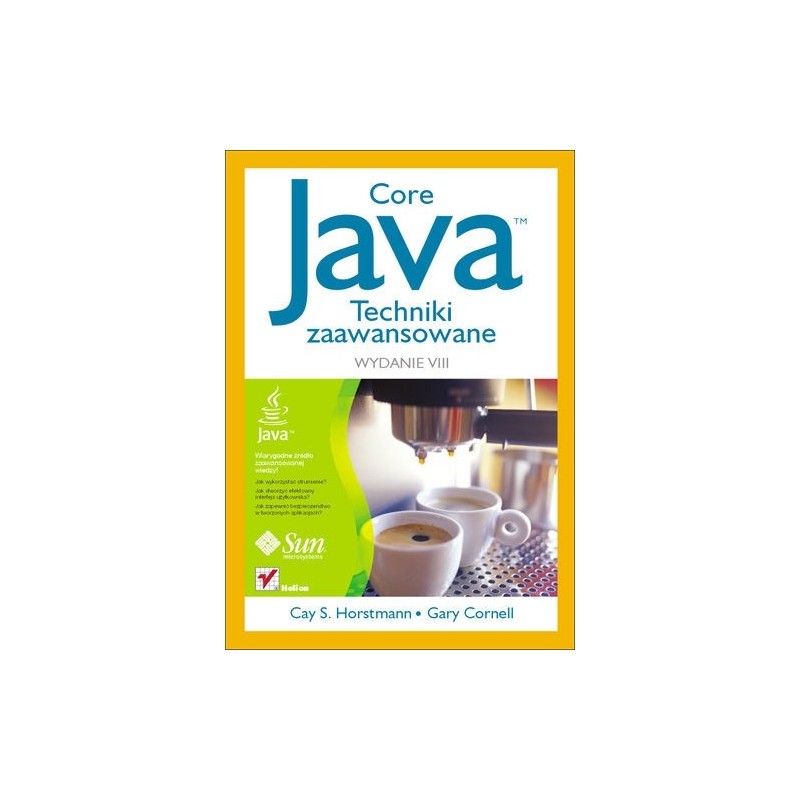



zł119.78 tax excl.
Cay S. Horstmann, Gary Cornell
About the book (only in Polish)
What made the Java programming language become so popular? There are several reasons for this: the ability to transfer code between programs, performance and what developers like the most - automatic memory cleansing mechanism. It is also important that Java is an object-oriented language, provides support for distributed programming and excellent documentation. In addition, numerous publications and a helpful community make Java a prominent place among other programming languages.
The next edition of the book, Java Advanced Techniques, Edition VIII, has been updated with all the elements that appeared in the sixth version of the Java Standard Edition platform. With this book, you'll learn how to use streams, how to parse XML documents, and how to create web applications. You will learn the JDBC interface, how to use transactions and execute SQL queries. The authors will show you in detail how to create applications using the Swing library. In addition, they will present how to ensure security in the applications you create. All these - and many more - issues will be presented in an accessible and proven way!
Table of Contents
Kazimierz Banasiak
Andrzej Dobrowolski, Piotr Komur, Adam Sowiński
Andrzej Dobrowolski, Zbigniew Jachna, Ewelina Majda, Mariusz Wierzbowski
Robert Brzoza-Woch
Janusz Kwaśniewski
Witold Jaszczuk
Gerhard Neumann, Cornelis Tuijn
No product available!
Radosław Kwiecień
H. Kreidl, G. Kupris, P. Dilger
Krzysztof Pławsiuk
Janusz Kwaśniewski

Cay S. Horstmann, Gary Cornell
